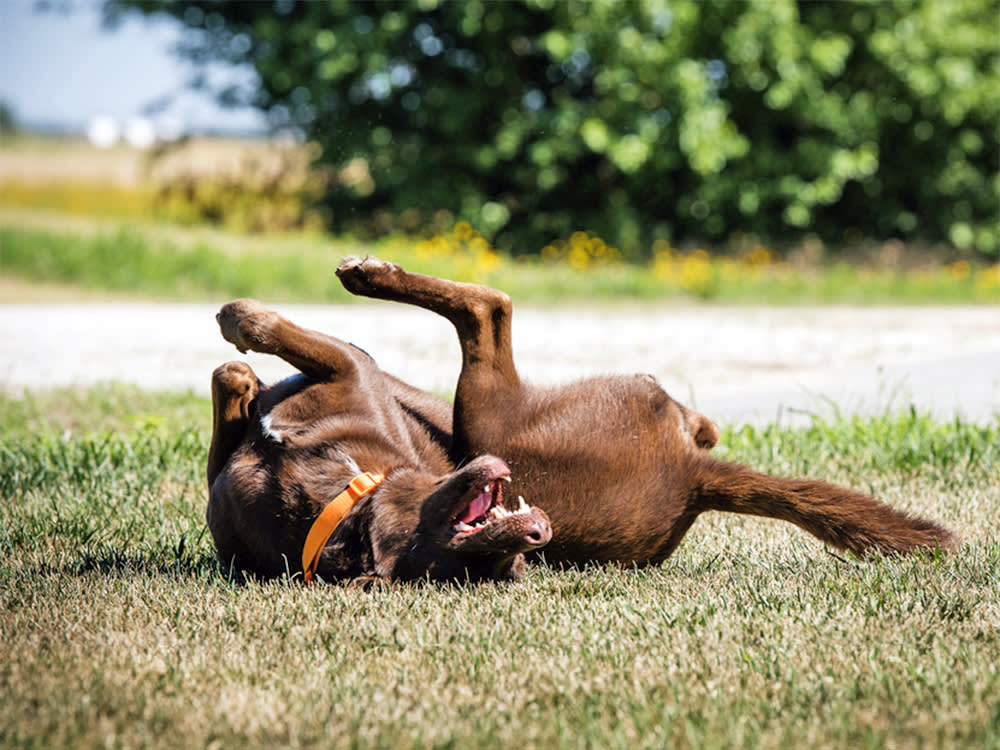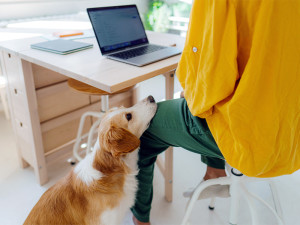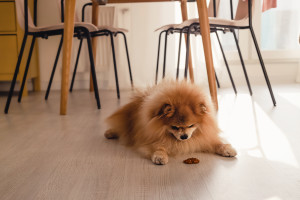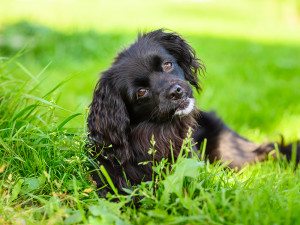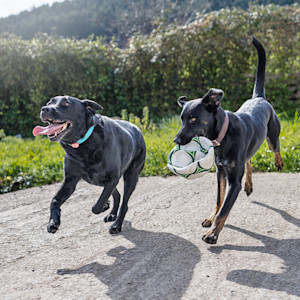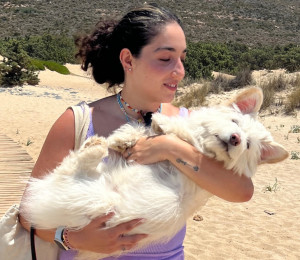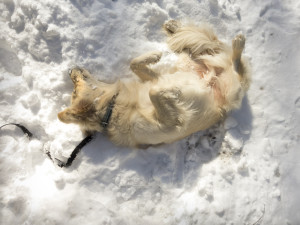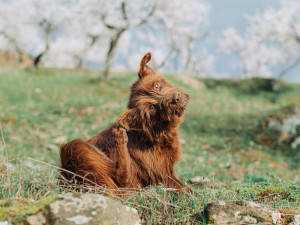Why Do Dogs Love to Roll in Poo? Discover the Smelly Truth
Dive into why dogs are drawn to that pungent pile
Imagine this: you’re on a peaceful walk with your dog. They’re off-lead, exploring the surroundings, when suddenly – before you can react – they’re already rolling in something smelly. Maybe it’s animal faeces, rotting leaves or even a dead animal. Glamorous? Not quite…
Many of us can relate to the frustrating, yet instinctively curious behaviour of dogs rolling in poo or other strong-smelling ‘substances’. My own dog, Joey, loves rolling in mud, sand, smelly algae and seaweed at the beach, and all kinds of rotting leaves at the park, and Kinship’s senior editor Orla Pentelow’s rescue Luna has an unfortunate habit of diving her perfectly white fur head-first into fox droppings. So it turns out, the stinky ritual is surprisingly common among our four-legged friends.
littleKin™ is Kinship’s home just for puppy and kitten parents. Bop over to check out expert advice, new pet tools, and special deals—all curated for your newest family member.
opens in a new tabWhile undeniably messy, rolling in stinky stuff is not only common but also deeply rooted in a dog’s natural instincts. So, why do dogs roll in poo? We dive into the reasons dogs are irresistibly drawn to that pungent pile.
Why do dogs roll in poo and smelly substances?
Evolution
Even though dogs have been living with humans for over 23,000 yearsopens in a new tab, they still hold on to some behaviours inherited from their wild ancestors, and rolling in poo is likely one of them. Research has shown that wolves often roll in strong-smelling substances, like dead animals or faeces, which scientists believe serves as a survival mechanism.
“It’s likely that the behaviour is a part of their inherited nature, similar to what wild canines do,” says Dr CW, veterinarian and in-house advisor at Boxie Catopens in a new tab. “Some will do it more often, especially if they have access to areas where they can find interesting or strong smells, and this seems to happen when they’re exploring or are outdoors.”
Olfactory camouflage
Studies done on wolves have shown several behavioural patterns that connect to this glamorous issue.
“One theory is that of olfactory camouflage,” says Diane Kasperowiczopens in a new tab, a dog trainer, behaviour consultant and co-author of canine enrichment guide Beyond the Bowl. “Wolves would roll in dead animals or highly scented odours to deter predators when they are stalking their prey.”
This is likely a survival tacticopens in a new tab to keep them camouflage from predators or to inform others where they had been, says Dr CW.
According to another studyopens in a new tab, ‘scent rolling’ is an unconditional innate response to strong odours. “This behaviour is influenced by the presence of some intense, and hitherto unknown, odours,” the study notes.
Social or communication behaviour
There is also a theory that scent rolling plays an important communication role, as rolling in faeces will help animals transmit information back to their packs. Also, according to a 2007 bookopens in a new tab, the behaviour may be like a collection of individual scents for pleasure, much like humans spraying on perfume.
Domestic dogs can also act with similar instincts and deeply ingrained behaviours, says Dr CW. Communicating with a pack may look a little different for modern dogs, but they still want to bring new, interesting smells back home (lucky us).
Diane explains that dogs may also be trying to put their own scent on the fox poo. “Anatomically, dogs have a circumoral gland (specialised skin glands) close to their mouths that secrete a grease-like substance. If you’ve seen a dog roll in fox poo, then do a purposeful sniff, followed by a head cock and cruise into the odour with the side of the face, that could be why.”
Dogs will rub their faces on carpets or sofas in a similar way, and there is also the theory of rolling on highly valued items to ‘claim them’.
“If you have ever seen a dog rolling in fox poo or a dead animal, there is no doubt there is sheer delight in doing so, much to the annoyance of the pet parent!” says Diane, and we’re inclined to agree.
Attention seeking behaviour and stimulation
“Although some believe dogs roll in poo in order to gain attention, or due to boredomopens in a new tab, such behaviour is more associated with instinct rather than attention-seeking,” said Dr CW.
However, Diane adds that, “most pet parents will give the dog attention when they go near the poo and therefore reinforce it unwittingly”. Dogs are curious creatures that want to explore, so “simply because it is there, they’ll investigate it”.
“Faeces can contain interesting scents from other animals’ diets or environmentsopens in a new tab,” she adds. “The close relationship between humans and dogs underscores the importance of understanding scent-related behaviours in canidae, which could have involved various forms of stimulation or exploration.”
“However, sometimes boredom provokes them into unpleasant behaviours; thus, the mental and physical stimulation of dogs will reduce the likelihood,” she added. Both experts agree that engaging, fun walks that provide both physical and mental stimulation could help deviate your dog from such habits.
How to stop your dog rolling in poo
While stopping your dog from rolling in poo might seem impossible, there are some ways to manage the behaviour. Apart from keeping the lovely scent of poo from your dog’s fur, there are also some health concerns when it comes to dogs rolling in faeces, such as parasitic or bacterial infections (including roundworms, parvovirus and E coli), skin infections and allergies that mean getting your pup to stop pre-roll is key. Here are some tips:
Train recall commands: reliable recall cues, such as ‘come’ or ‘leave itopens in a new tab’, can sometimes interrupt your dog’s rolling if you catch them early. “Once the head has cocked, though, they may be committed,” says Diane, so keep a close watch if your dog has a history of rolling.
Keep your dog on a lead: while not always practical, keeping your dog on a lead in areas with strong smells (like farmland or beaches) can help you control their impulse to dive into tempting scents.
Play and exploration: providing physical and mental stimulationopens in a new tab, from interactive toysopens in a new tab to engaging, longer walks, can reduce your dog’s need to seek out other sources of excitement.
How to get the smell out of your dog’s fur
If all of that fails and your dog manages to roll in something foul, a bath is usually inevitable. If you have a roller, getting them a dog coat to catch some of the smelly substances might be a solution. If it’s already stuck in your dog’s fur, here are some expert-recommended odour-neutralising solutions:
Use a quality dog shampoo: choose a dog-specific shampoo opens in a new tab(some human ones can be too strong) designed to neutralise odours rather than masking them.
Vinegar and water solution: after shampooing, a vinegar and water rinse can help degrade stubborn odour compounds. “Make sure to dry the dog thoroughly and avoid strong chemicals since these sometimes irritate their skin,” adds Dr CW.
Try ketchup: surprisingly, tomato ketchup’s vinegar content can help neutralise odours particularly for fox poo. Apply ketchup to the smelly area, let it sit briefly, then wash with shampoo. “The acid in the vinegar within the tomato ketchup helps to break down the strong sulphur-containing compounds in fox poo that cause the offensive stench,” explains Diane.
Enzymatic cleaners: these cleaners, such as Nature’s Miracleopens in a new tab, break down organic compounds, removing odours from both your dog and home surfaces.
